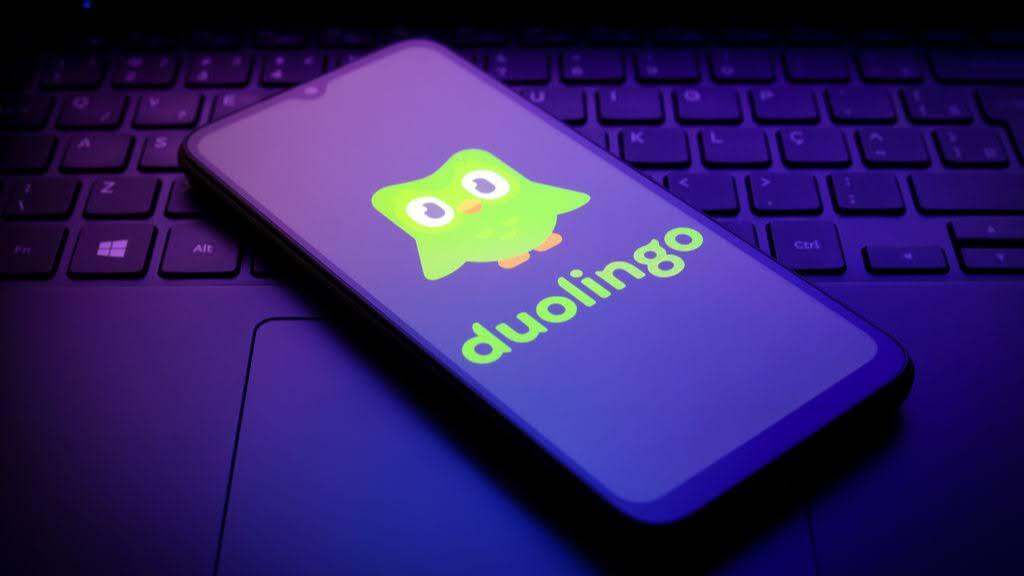
Check out our latest products
With more than half a billion downloads on the Google Play Store alone, Duolingo is one of the most popular ways to learn a new language. On iOS, the app has over 4 million reviews and a 4.8 out of 5 star rating. Clearly, the company’s marketing is working, but how much value does the app actually provide for beginner, intermediate, and expert learners?
I’ve been using Duolingo for over 3.5 years now (my current streak stands at a 1,334 days) in what feels like an endless quest to master Japanese. In that time, I’ve become intimately familiar with the platform, its strengths, and its glaring weaknesses. Still, after nearly four years of grinding, it might surprise you to hear I don’t recommend it for fluency.
How It Works
Every morning, I start my day by dialing up a Duolingo lesson on my phone. The app is designed to get you into lessons quickly, and the streamlined interface makes it easy to track your progress. Lessons are broken down into large sections, which are then divided into more granular units that cover a specific topic. For instance, I’m currently in a section called “Talk about date plans,” focused around making plans with a romantic partner.

(Credit: Duolingo)
Each day, you earn points based on how you do in a lesson, which are then used to measure how you’re doing in your league (I’m currently in the Emerald League, or level six of 10). You’re paired with 20 other users, and at the end of the week, the top five are promoted to the next level, while the bottom five are demoted. When you complete a lesson, you earn gems, which can be used to purchase streak freezes and time freezes, as well as experience points (XP), achievements, and monthly badges to display on your profile.
The app also has a number of social elements, including a friends system that lets you complete quests with others to earn additional rewards, see your friends’ progress, and send them gifts like streak freezes or XP doublers. The entire system is highly gamified and has lots of ways to keep you invested in your daily progress (and make you feel guilty if you skip a lesson).
Practice Is Supposed to Make Perfect
The bite-sized nature of each lesson, however, is also a bit of a double-edged sword. The time commitment, often just a few minutes, keeps you coming back to knock out a lesson and maintain your streak. Duolingo’s design and marketing emphasize the low lift.

(Credit: Duolingo)
But if you’re just making time for one quick lesson per day, you’re not learning (or reinforcing) what you practice. There’s limited opportunity built into the standard lesson structure to review older material. Daily lessons only present new content, from vocabulary to sentence structures.
While you can technically go back and review previous units, it’s not part of the app’s structured learning, which can make it hard for new information to set in. I find myself frequently forgetting material I’ve learned in older units, so it often feels like the new material just overwrites the old.
Get Our Best Stories!

Your Daily Dose of Our Top Tech News
By clicking Sign Me Up, you confirm you are 16+ and agree to our Terms of Use and Privacy Policy.
Thanks for signing up!
Your subscription has been confirmed. Keep an eye on your inbox!
5.0
Exemplary
What Our Ratings Mean
- 5.0 – Exemplary: Near perfection, ground-breaking
- 4.5 – Outstanding: Best in class, acts as a benchmark for measuring competitors
- 4.0 – Excellent: A performance, feature, or value leader in its class, with few shortfalls
- 3.5 – Good: Does what the product should do, and does so better than many competitors
- 3.0 – Average: Does what the product should do, and sits in the middle of the pack
- 2.5 – Fair: We have some reservations, buy with caution
- 2.0 – Subpar: We do not recommend, buy with extreme caution
- 1.5 – Poor: Do not buy this product
- 1.0 – Dismal: Don’t even think about buying this product
Read Our
Editorial Mission Statement
and
Testing Methodologies.
Duolingo
The best free app for learning a new language or sharpening your skills.
I should note that there is a practice tab you can visit in lieu of lessons, though this leads to another issue. Most of the practice options are locked behind a subscription model. While the base app is supported by ads that play at the end of each lesson, you must subscribe to unlock unlimited mistakes per lesson, practice options, and other content. While the more advanced features being paywalled makes sense, some basic practice features should be available with the ad-supported version, which costs $12.99 per month.
Recommended by Our Editors
Why It Can’t Teach Me Japanese
One of the major issues I have with Duolingo comes down to my choice of language. As a native English speaker, Japanese is one of the most complicated languages to learn, with three different scripts (katakana, hiragana and kanji), wildly different sentence structure and grammar, and challenging pronunciation nuances.

(Credit: Duolingo)
The main issue Duolingo faces with a complex language like this is that it fails to describe basic concepts like sentence structure, leaving you to intuit those rules for yourself, or learn them through some other method. There’s also very little practice—especially early on—with writing the language, and to learn the various scripts. You have to duck out of the main flow of lessons and work through memorization exercises.
Ultimately, Duolingo may be more suitable to learning simpler languages or those closer to your native tongue, but I’d never recommend it for learning Japanese. I’ve supplemented it with other learning resources, such as Rosetta Stone and a Steam game called Noun Town to start gaining some conversational fluency in the language. I also use the Hiragana Memorizer Android app for learning hiragana and katakana, though it’s no longer on the Play Store.
Duolingo can be decent for reinforcement, or daily contact with a language that you’re learning through other means. And as a fun, gamified way to put my brain in Japanese mode for a few minutes, it’s reasonably effective. However, I think I could spend a decade or more with Duolingo and still not be truly fluent in Japanese.
About Alan Bradley
Contributor

Read the latest from Alan Bradley

![[2025 Upgraded] Retractable Car Charger, SUPERONE 69W Car Phone Charger with Cables Fast Charging, Gifts for Men Women Car Accessories for iPhone 16 15 14 13 12, Samsung, Black](https://i1.wp.com/m.media-amazon.com/images/I/61SaegZpsSL._AC_SL1500_.jpg?w=300&resize=300,300&ssl=1)




![[True Military-Grade] Car Phone Holder【2024 Stronger Suction & Clip】 Universal Cell Phone Holder for Car Mount for Dashboard Windshield Air Vent Long Arm Cell Phone Car Mount Thick Case,Black](https://i2.wp.com/m.media-amazon.com/images/I/715PBCuJezL._AC_SL1500_.jpg?w=300&resize=300,300&ssl=1)
![[エレコム] スマホショルダー ショルダーストラップ 肩掛け ストラップホールシート付属 丸紐 8mm P-STSDH2R08](https://i3.wp.com/m.media-amazon.com/images/I/51BMFf06pxL._AC_SL1500_.jpg?w=300&resize=300,300&ssl=1)







